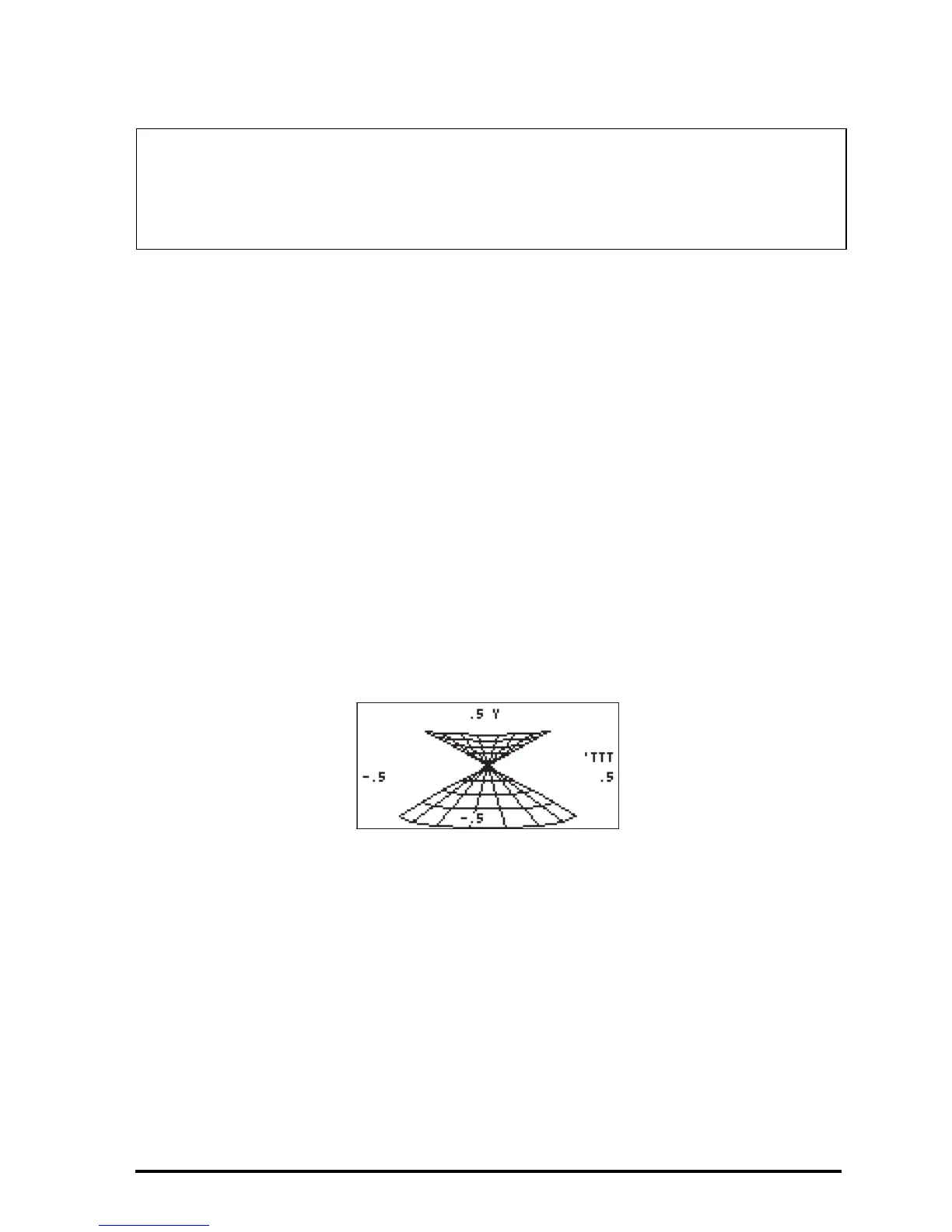Page 12-42
For example, to produce a Pr-Surface plot for the surface x = x(X,Y) = X sin Y, y
= y(X,Y) = x cos Y, z=z(X,Y)=X, use the following:
Θ Press „ô, simultaneously if in RPN mode, to access to the PLOT
SETUP window.
Θ Change
TYPE to Pr-Surface.
Θ Press ˜ and type ‘{X*SIN(Y), X*COS(Y), X}’ @@@OK@@@.
Θ Make sure that ‘X’ is selected as the
Indep: and ‘Y’ as the Depnd: variables.
Θ Press L@@@OK@@@ to return to normal calculator display.
Θ Press „ò, simultaneously if in RPN mode, to access the PLOT
WINDOW screen.
Θ Keep the default plot window ranges to read:
X-Left:-1, X-Right:1, Y-Near:-1, Y-
Far: 1, Z-Low: -1, Z-High:1, XE: 0, YE:-3, zE:0,
Step Indep: 10, Depnd: 8
Θ Press @ERASE @DRAW to draw the three-dimensional surface.
Θ Press @EDIT!L @LABEL @MENU to see the graph with labels and ranges.
Θ Press LL@)PICT @CANCL to return to the PLOT WINDOW environment.
Θ Press $ , or L@@@OK@@@, to return to normal calculator display.
The VPAR variable
The VPAR (Volume Parameter) variable contains information regarding the
“volume” used to produce a three dimensional graph. Therefore, you will see it
produced whenever you create a three dimensional plot such as Fast3D,
Wireframe, or Pr-Surface.
Note: The equations x = x(X,Y), y = y(X,Y), z=z(X,Y) represent a parametric
description of a surface. X and Y are the independent parameters. Most
textbooks will use (u,v) as the parameters, rather than (X,Y). Thus, the
parametric description of a surface is given as x = x(u,v), y = y(u,v), z=z(u,v).

